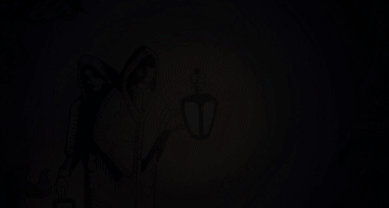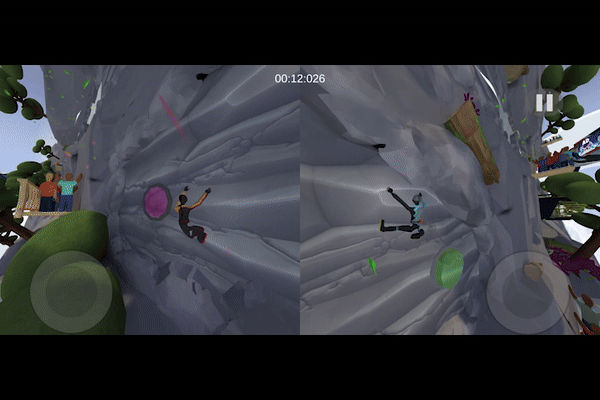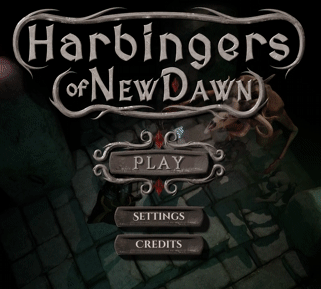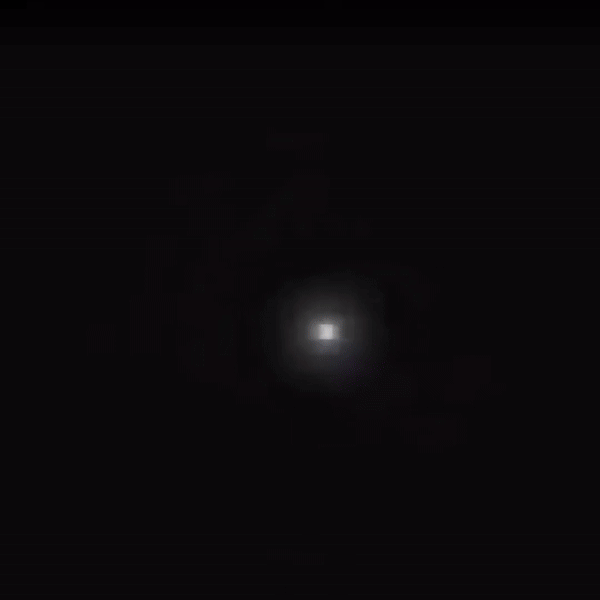TEAM PROJECTS
SIDE PROJECTS
LIGHT'S OUT
CONCEPT
Light's Out is a narrative driven slow-paced non combat oriented Isometric & turned-based single player experience. Inspired by Into the Breach & Darkwood. Set in a world consumed by darkness, embark on a journey as a messenger of light. Explore an abandoned castle, seeking valuable messages of old. Your lantern, depleting with each step you take into the shadows.
GENRE
Narrative-driven, Turn-based,
Exploration
ROLES
Narrative Design, Gameplay Design,
Level Design, UI Design
Inspiration
Into the Breach & Darkwood
TIME
3 weeks (Oct '16 - Nov '03)
TEAM SIZE
12
TOOLS
Unity, Perforce
DESIGN GOALS
The main goal was to make sure that the narrative and enviroment design would harmoniously conect in order to create the right setting for a non combat oriented gameplay, tying it with the level design.
This was achieved by consistent collaboration and discussions within the team about the narrative foundation

CONTRIBUTIONS
Narrative/story frame work
Draft of introduction video
Created Quest and objectives
Amount of turns based on player's lantern fuel
Refueling the lantern increaces player's visibility
Item use functionality
From paper prototype to final stage
Close collaboration with Environment Artists
Account for non combat situations
NARRATIVE DESIGN
The core of the narrative consist in the experience of recovering messanges from previousely perished messengers on the dangeourus routes conecting the light city's in a eerie world consumed by darkness.
As we crafted the story, the pieces began to align with our vision for player experience and gameplay integration. With this setup, we wanted the players to be immersed in the role of a character on a grand mission, facing the constant threat of lurking enemies while constantly being aware of the amount of fuel left. With this combined synergy, we are trying to create an experience relying on caution and thoughtful decision making, while also having a lingering constant pressure on the player throughout the gameplay.
I worked closely with our concept artist to craft this foundation, linking all aspects of our project to the narrative. One of the ways we achieved this was by confining ourselves to a specific kind of artstyle and colour profile for the purpose of capturing the atmosphere and setting immediately upon starting the game.
Additionally, having the support of a deep and dark menu track as well as an intro video helped to set the stage for the narrative storyline and quest you experience in game.

Perished messenger

Fellow messenger

Outside the castle

Inside the castle

The world falling into darkness
GAMEPLAY DESIGN
Caution is of the utmost priority as every turn depletes your fuel. The player needs to use their three action points wisely during each turn as the choice of either using an item, move or not will always put you in a more difficult situation in the next turn with reduced visibility from the lantern.
While exploring the level, the player can find items to gain an advantage.The shield item can be used in the case of an enemy attack, helping you survive for another turn.The cloak can be activated and used during a player’s turn to sneak past an enemy so as not to agro it. Alternatively if the player is being chased, it can be used to evade the enemy and get to safety.As well as a light orb which can be thrown in any direction a few tiles away from the player, giving visibility to a certain area around it for a few turns.
Except for finding items, there is extra fuel for the lantern scattered around the environment.Having a fully filled lantern will give the player great visibility of their surroundings while also getting a better chance to locate items, the objectives and avoid enemies. But it also means potentially not having enough fuel to survive until the quest is completed.

Low fuel equals low visibility

Item structure

Shield item

Key to progress

Fuel remaining
LEVEL DESIGN
In the early stage of the level design I spent quite a lot of time with my fellow designer in prototyping with a quick and practical board game set up as well as on paper.Our goal from the beginning was in figuring out how the level best should reflect the setting and narrative while making use of our gameplay features.
By using the mechanic of the lantern combined with its fuel level to show and hide elements such as enemies, items and the objective on the map, we were able to tie the narrative and the gameplay with the level structure in a cohesive way.
I wanted to make sure it is the players own choices if they want to play it safe and have the lantern filled, but risk running out of fuel. Or if they want to play it risky, keeping the fuel for the long run but with a greater risk of meeting an enemy.

First prototype

Papper prototype

First blockout

Second blockout

With some textures and mechanics

Final result
AscenDuo
CONCEPT
AscenDuo is a co-op puzzle game where you and a friend collaborate on a one phone same-screen setup to conquer even the tallest of mountains! On your adventures, players will encounter several obstacles to overcome. In order to achieve victory, players need to combine forces and help each other by using a pickaxe and a grappling hook.
GENRE
Co-op, Extreme Sports,
Puzzle, Mobile
ROLES
Gameplay Design, System Design,
Level Design
TIME
4 weeks (Jan '22 - Feb '15)
TEAM SIZE
17
TOOLS
Unity, Perforce, FMOD studio
DESIGN GOALS
The main goal was to tie the game into the theme of Extreme sports games made on mobile based on Turborilla Studio.
This was achieved by a constant pursuit and emphasis on fun gameplay together with the collaboration of our team.

HARBINGERS OF NEW DAWN
CONCEPT
Harbingers of New Dawn is a 4-player co-op (LAN) spell-casting shooter game set in a magical world overruled by dark arcane magic. Inspired by Vermintide & Magicka. Enter together as agents of an ancient magical task force, charged with a find and retrieve mission for a long lost enchanted artefact.
GENRE
Co-op, Adventure,
Spell-Casting Shooter
ROLES
Product Owner,
Level Design, Narrative Design,
Gameplay Design, System Design
Inspiration
Vermintide & Magicka
TIME
7 weeks (Apr '29 - Jun '14)
TEAM SIZE
13
TOOLS
Unreal 5, Perforce, Jira
DESIGN GOALS
The main goal was to create and curate an engaging cooperative gameplay experience, with a spellcasting system tied together with a clear level design
This was realised together because of our highly dedicated, experienced but most importantly compassionate team!

CONTRIBUTIONS
Narrative/story frame work
Cohesive world design
Objective based quests
Dynamic 3 spell lodout system
Hordes of Common & Elite enemy types
Objective and based combat scenarios
From paper prototype to final stage
Narrow and open choke points for tactical combat
Environmental storytelling
NARRATIVE DESIGN
The core of the narrative play's out in a world where magic has dwindled, the reborn efforts of the Magic Marines embark on a quest to retrieve ancient relics of old to restore the magical balance and face the encroaching darkness.
In developing this game, we intentionally started with a simple yet potent story to avoid steering into a fully narrative-driven game. This decision laid the foundational groundwork for the entire narrative structure. Our primary goal was to weave the story seamlessly into the gameplay mechanics, objectives as well as the environment to enhance player immersion in the world.
To enhance the gaming experience, we integrated a series of objectives that guide players through each level, culminating in a grand quest to restore the magical balance in the world. These objectives range from tactical tasks like building bridges to thematic challenges such as destroying dark magical relics. This variety enables us to weave a narrative that progresses through various environmental iterations, each designed to advance the story.
In other words we put a strong emphasis on the world design as our biggest advocate for representing our game in the best way possible

Concept of common enemy

Concept of elite enemy

Concept of first Tree Of Wisdom

Approaching the first Tree Of Wisdom

Our four Heroes facing off the common and elite enemies
GAMEPLAY DESIGN
Designing for a four-player PvE experience, our biggest focus was centered around creating fun and engaging group interactions. The gameplay is crafted to encourage teamwork, with each player's decisions and spell choices significantly impacting the collective success. This cooperative framework ensures that strategy and collaboration are at the heart of the game, ensuring that the playthrough with friends is both engaging and enjoyable.
At the core of our combat system is a dynamic spell loadout feature, allowing players to equip any three of the four available spells to best suit their playstyle and the challenges ahead.Players must strategically switch between their selected spells to maximize effectiveness, carefully managing cooldown times and utilizing them together to effectively create powerful combos as result of the systems.
The spells include:Fireball: A high-damage spell perfect for taking down tougher enemies quickly.Freeze Ray: This spell deals low damage but can freeze enemies, making it crucial for controlling the battlefield.Lightning Strike: An area-of-effect attack that damages all enemies within its radius, ideal for handling groups of foes.Wind Burst: This spell causes high knockback, pushing enemies and teammates away, providing critical breathing room during fights.

Enemies approaching in the ravine

Charge attack from the castle bridge

Swarming enemies from the castle walls

Objective sequence documentation

Gameplay sequence documentation
LEVEL DESIGN
As we decided to go for a linear adventure progression supported by a grand quest with interwoven objectives on your path we knew the level design would play a large part.Taking an overview of the level design it needed to support everything from a sense of direction, a clear goal, environmental storytelling, close combat scenarios and support co-op tactical collaboration.
By utilising the space for a four player experience we combined the progression between open arena type combat zones with narrow choke points for more complete PvE experience.
It was important for me and my fellow level designer to make sure the player’s can have the freedom to progress at their own risk with time to backtrack to your fellow friends if needed. This was kept in mind for all stages of the level’s Forest, River, Mountainous Ravine all the way to the final Castle.

Initial whiteboard layout

Level concept

First blockout

Textured mid stage blockout

Final adjustments by final stage

Final result
THE CASSETTE RENTAL
CONCEPT
The Cassette Rental is a first-person atmospheric experience set in a late 80s video rental store with Retro Graphics. Inspired by Mouthwashing & Arctic Eggs. Step into the shoes of a night-shift clerk on a routine evening, surrounded by shelves of VHS tapes and nostalgic movie posters. Your boss has recently acquired a futuristic device with the power to transport you directly into the movies themselves—and tonight, he needs you to test it.Activate the device and be absorbed into a surreal experience where the familiar begins to feel strange, as if remnants of these film worlds are clinging to reality… blurring the line between fiction and reality.
GENRE
Surreal, Atmospheric,
Narrative, Dark
ROLES
Product Owner,
Gameplay Design, World Design
Sound Design
Inspiration
Mouthwashing & Arctic Eggs
TIME
4 weeks (Sep '30 - Oct '23)
TEAM SIZE
8
TOOLS
Unreal 5, Perforce, Jira, Audacity
Digital Audio Workstation
DESIGN GOALS
The main goal was to seamlessly blend atmospheric storytelling with immersive, first-person progression to evoke a sense of mystery and nostalgia. This required close collaboration between the narrative and the gameplay mechanics in order to create a cohesive experience where the mundane setting transforms into something increasingly surreal.
This was achieved through regular team discussions and a shared commitment to crafting a world that subtly blurs the line between the ordinary and the extraordinary.

CONTRIBUTIONS
Multi layered - world frame work
Cohesive world design between fiction and reality
Grounded concept as the "red thread" for the development
Core interaction mechanics
Cohesive world-to-VHS transitions
Progressive, UX-focused gameplay systems
Recording and editing specific sound effects
Built an extensive library of SFX
Implemented within blueprints
WORLD DESIGN
In The Cassette Rental, my focus was on crafting an atmospheric and evolving world that adapts to each VHS cassette's new experience, blurring the boundaries between the familiar and the surreal. Collaborating closely with the narrative, Level and Technical designer's, I designed and iterated on the different phases of The Rental Store, a central space that dramatically shifts after each movie experience. This transformation reflects each VHS cassette's influence on the real world, creating an unsettling blend of reality and fiction.
The world design involved several layers of interconnected spaces:The Maze Experience: This first cinematic realm places the player in a dark, labyrinthine environment, where the objective is to reach the heart of the maze and escape while evading lurking monsters. The main focus for this part lies on creating visual and spatial cues to guide players through the maze, balancing suspense and navigation in this otherworldly setting.The Descent (Platform Experience): In the second VHS experience, players delve deeper into a mysterious, descending platform sequence. This world design emphasises psychological tension as players solve puzzles while confronting moral dilemmas within a progressively darker, oppressive environment.The Take Over (Red Light, Green Light): Following the second VHS cassette, players return to The Rental Store, now overtaken by the machine itself. Here, the point is shaped around the experience reminiscent of the child's game "red light, green light", adding tension to the store’s final metamorphosis. The goal of this climactic moment is to leave players questioning the reality of their surroundings...
Each of these interconnected environments required careful planning and iteration to ensure a seamless progression, blending interactive storytelling with atmospheric cues to guide players through The Cassette Rental's layered world.

The first edition of the store

First experience: The Maze

Second edition of the store

Second experience: The Platform

Third edition of the store

Final edition of the store - Light

Final edition of the store - Dark
GAMEPLAY DESIGN
In The Cassette Rental, the gameplay mechanics were designed to be simple yet versatile, supporting player immersion across various phases of the game. Our goal was to create a core set of interactions—object handling, environment navigation, and sequential actions—that could be applied in creative ways throughout the VHS experiences, building a cohesive yet evolving player journey.
A central feature is the VHS Transport Machine, which transports the player into each VHS world. This machine requires the player to execute a precise, step-by-step manual sequence to initiate the transport process, reinforcing the tactile, analog feel of a brand new futuristic device constructed in the setting of the late 80s. This sequence not only grounds the player in the world but also builds anticipation for each transition between realities.
Each VHS experience adds unique twists to these core mechanics:The Maze: Introduces a flashlight, essential for navigating the dark, maze-like environment. While it illuminates the path, it also attracts nearby monsters, creating a balance between visibility and vulnerability.The Descent (Platform Experience): Puzzles play a key role, requiring both interactive and physical mechanics. Players must step on panels in a Simon Says-like sequence and solve combination puzzles with statues. In the progression of each section the player descend deeper into the unknown and add layers of tension as players make their way downward solving the puzzles.The Take Over (Red Light, Green Light): In the climactic phase, the gameplay shifts to a high-stakes “red light, green light” game, where the player must stop and start based on randomized cues. With split-second reactions, players can avoid penalties maintaining fairness while enhancing the tension in this final escape sequence.

Early version of the VHS Transport Machine

The VHS Transport Machine

Sequences of events for each level section

Inside the start of The Maze

Statue section in The Descent
SOUND DESIGN
In The Cassette Rental, the implemented sound design was crucial to amplify the atmosphere and immerse players across each phase. Distinct ambient sounds accompany each version of The Rental Store, intensifying the shift from familiar to surreal. The VHS Transport Machine features multiple unique sounds, reinforcing the analog feel of this futuristic device. As well as additional effects for each entry and exit between worlds.
In the Maze, audio cues for lurking monsters and the flashlight heightened suspense, while the Platform Level uses interaction sounds to build tension during puzzle progression. For the final Red Light, Green Light phase, randomised sound cues add to the unpredictability, enhancing the intensity of this climactic sequence.
Each sound choice deepened the evolving, surreal atmosphere of The Cassette Rental.

In engine SFX catalogue

Red Light Green Light

VHS Transport Machine
YOU'RE MOVING!? AGAIN!?!
The Board Game
YOU'RE MOVING!? AGAIN!?! is a 2-5 player cooperative board game concept I made for Futuregames Game Designer application.
Ostatnia Zemsta
CONCEPT
Game Jam KULTURA W GRZE.
Where we landed on 3rd place!Ostatnia Zemsta centres around the story which takes place in one of the Polish classic literatures by Aleksander Fredro Zemsta. The focus is the three impossible tasks given by the character Klara to Papkin in order to secure her hand in marriage.
GENRE
Casual, Narrative-based
ROLES
Narrative Design, Gameplay Design, UI
TIME
48 Hours
TEAM SIZE
4
TOOLS
Unity
About me
Currently in the final stages of my Game Design education, with a background in hospitality, brand development, and startups in Sweden.
Over the past few years, I’ve found my passion in design—where gameplay, worldbuilding, systems, and story come together to shape cohesive and engaging player experiences.

Whether working on mechanics, quest structures, or level flows, I enjoy designing experiences that feel natural, intuitive, and emotionally grounded. I’m especially drawn to the intersections where different parts of a game meet: how a mechanic supports a story beat, how a level layout guides the player without words, or how documentation can align an entire team.
In team projects, I often act as the “glue” between disciplines—translating design goals into clear documentation, maintaining a shared vision, and helping bring everyone’s contributions together into something fun, functional, and meaningful





























































